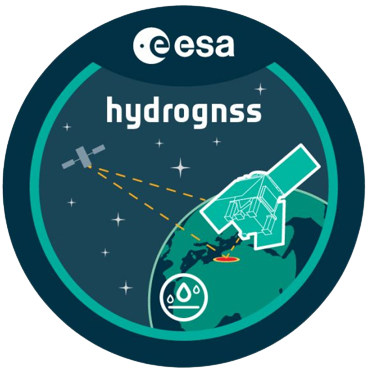Innovations
HydroGNSS collects maps of the reflections from multiple GPS and Galileo signals, and these are used to calculate the reflectivity of the surfaces. The sensed reflectivity is affected by water content, specifically permittivity, surface roughness and the overlying vegetation. If these factors are correctly accounted for, the geophysical products can be determined. Special innovations introduced by HydroGNSS include dual polarisation and dual frequency (L1/E1 and L5/E5) reception, and collection of high rate coherent reflections.
Soil Moisture
Soil Moisture knowledge is needed for weather forecasting, hydrology, agricultural analysis, and wide scale flood prediction. The dual-polarised reflections are expected to help separate roughness and vegetation effects from soil moisture. Better vegetation penetration and higher resolution may be possible using coherent channel and second frequency reflections.
Soil Freeze / Thaw State
Soil Freeze / Thaw State especially over permafrost regions, is useful to identify the date in the year of state change. The freeze / thaw state affects the surface radiation balance and the exchange rates of latent heat and carbon with the atmospheric boundary layer, and acts as a tracer for sub-surface permafrost behaviour in high latitudes.
Inundation / Wetlands
Inundation / Wetlands knowledge is important as the fragile water-dependent ecosystems in wetlands, often hidden under forest canopies, can also turn into sources of methane, whilst elsewhere an over-supply of water can lead to inundation and destructive flooding. In particular the coherent channel will allow recovery at achieve higher resolution.
Forest Above Ground Biomass
This knowledge feeds into the understanding of carbon stock in forests and a sink in the carbon dioxide cycle, and also has a coupling to biodiversity. The reflected GNSS signals are attenuated by biomass
Secondary Mission Objective
The radar cross-section of the reflections from the ocean surface is affected by the surface roughness which in turn is closely related to the wind speed. The presence of ice causes strong reflections, and so the extent of the ice over the ocean can be mapped from GNSS reflections. These two parameters address GCOS ECVs Ocean Surface Stress and Sea Ice Extent.
